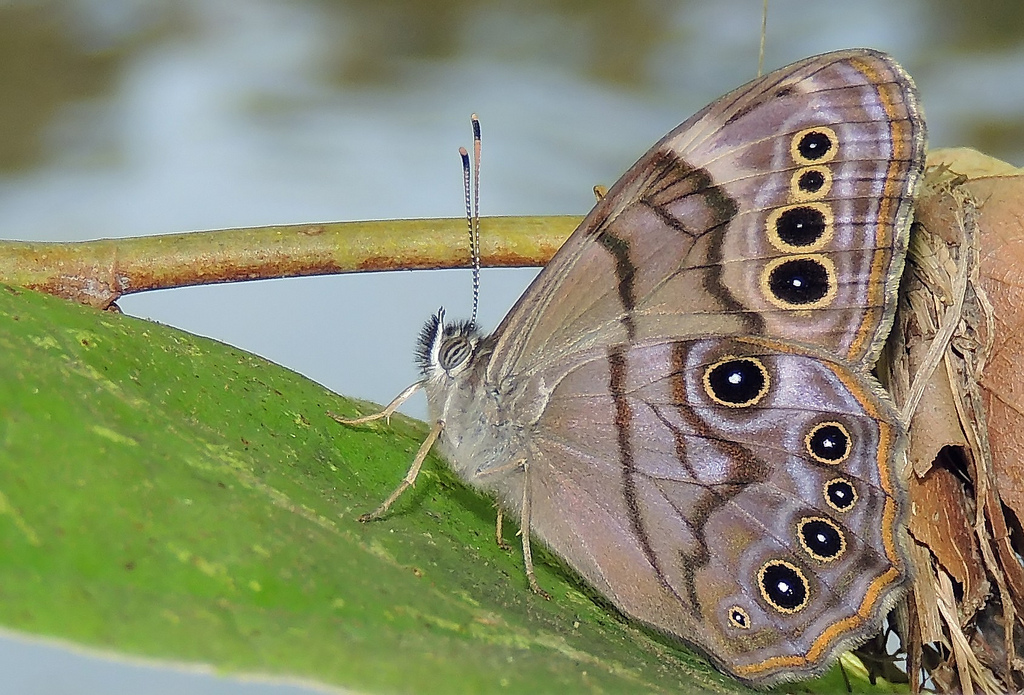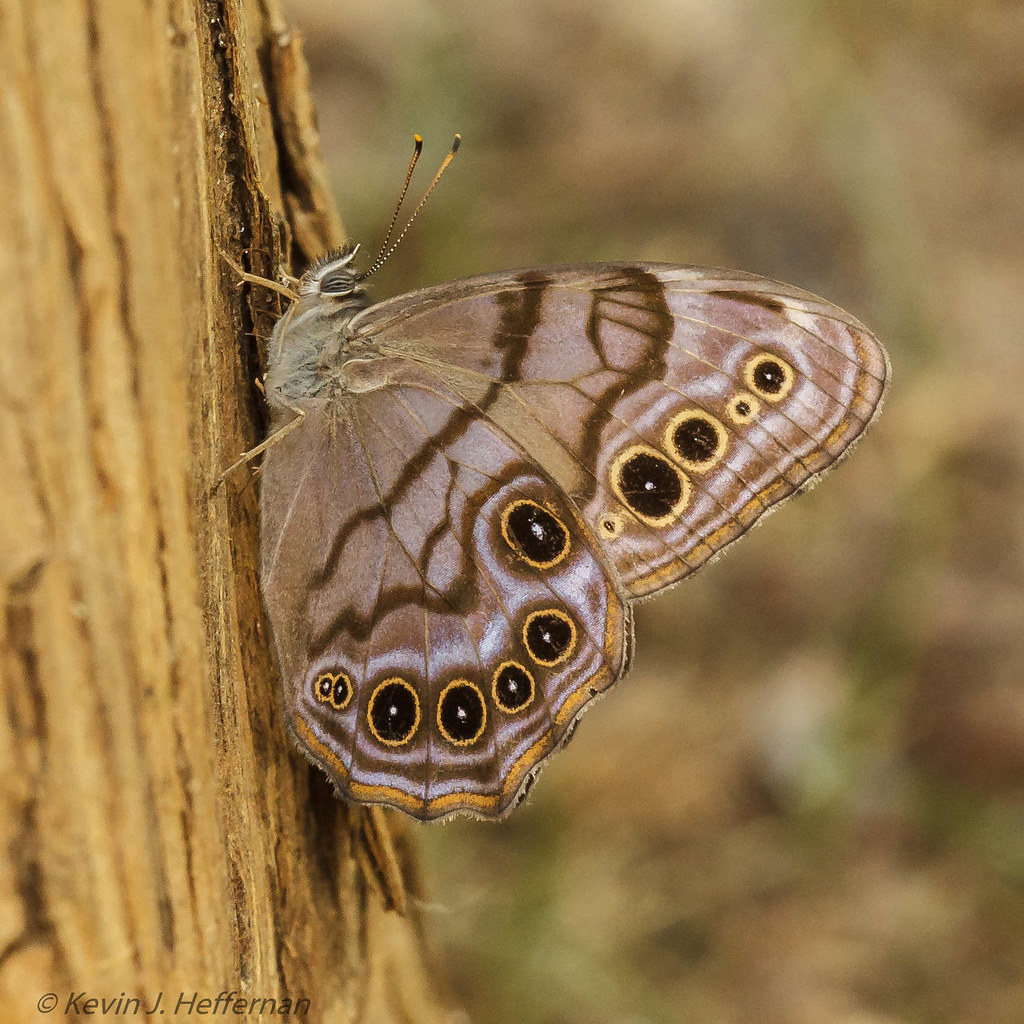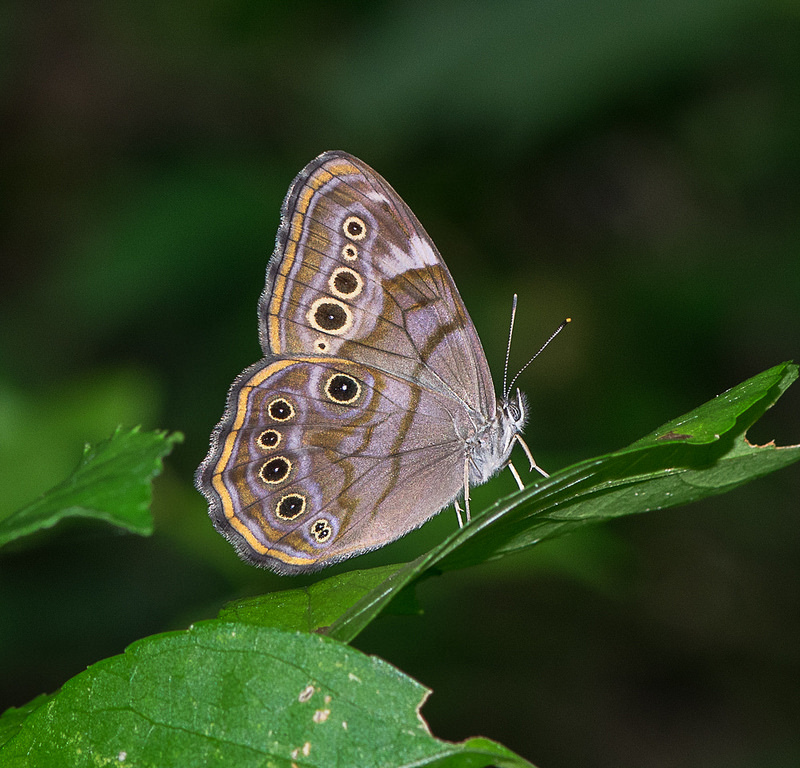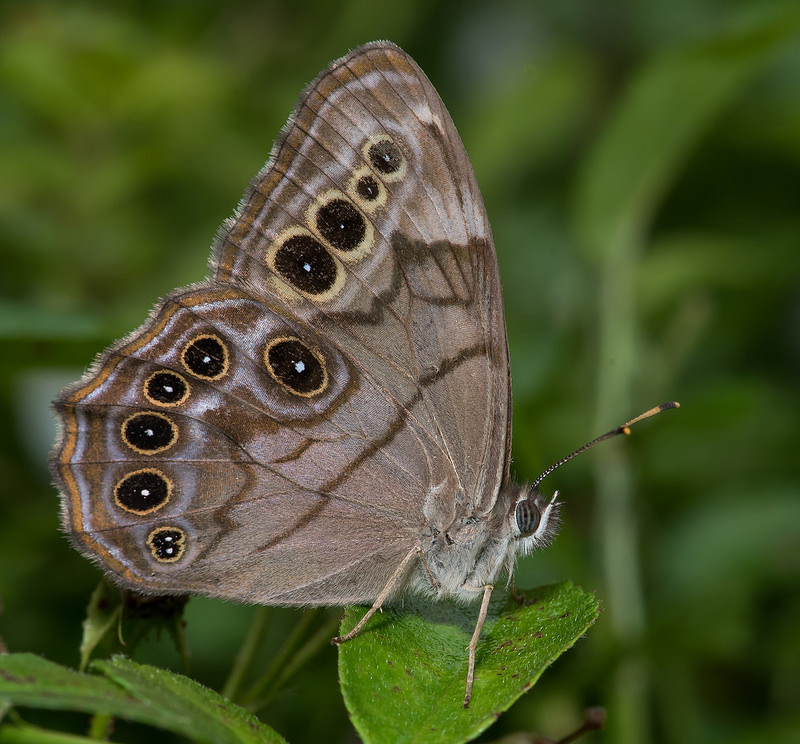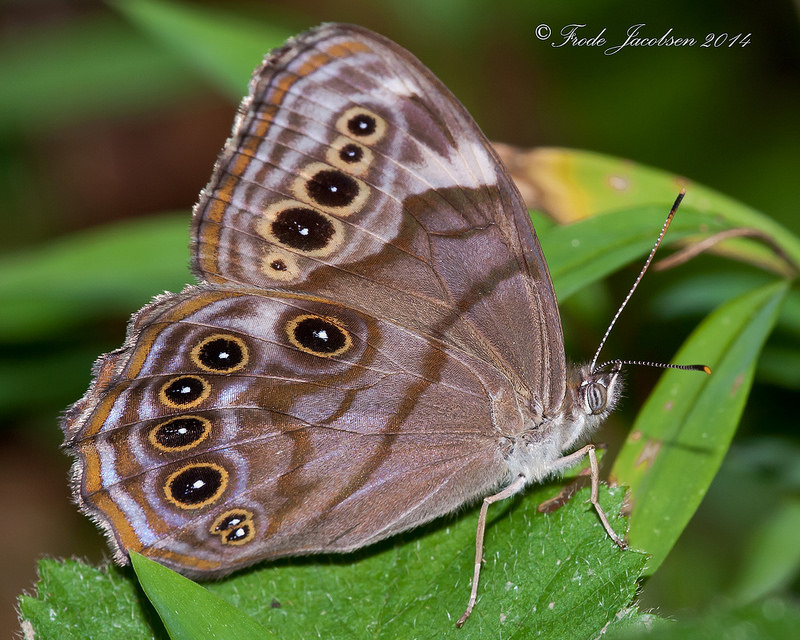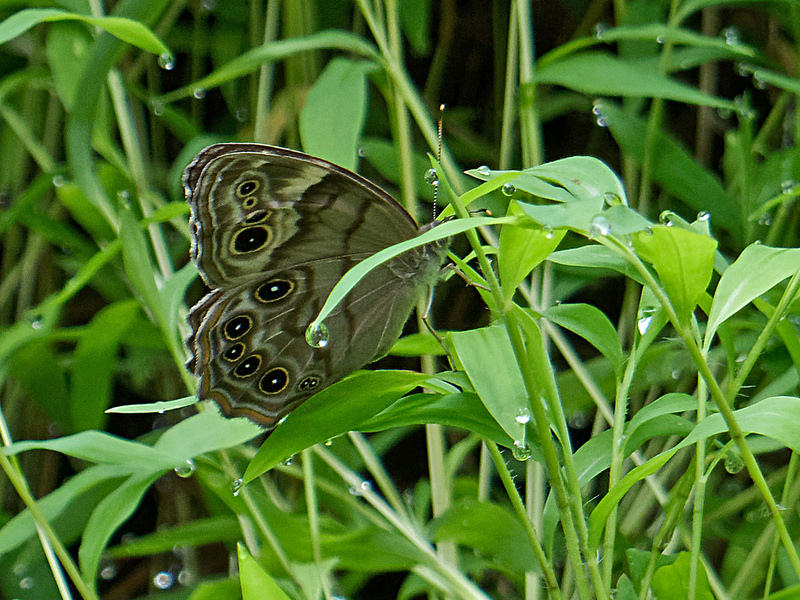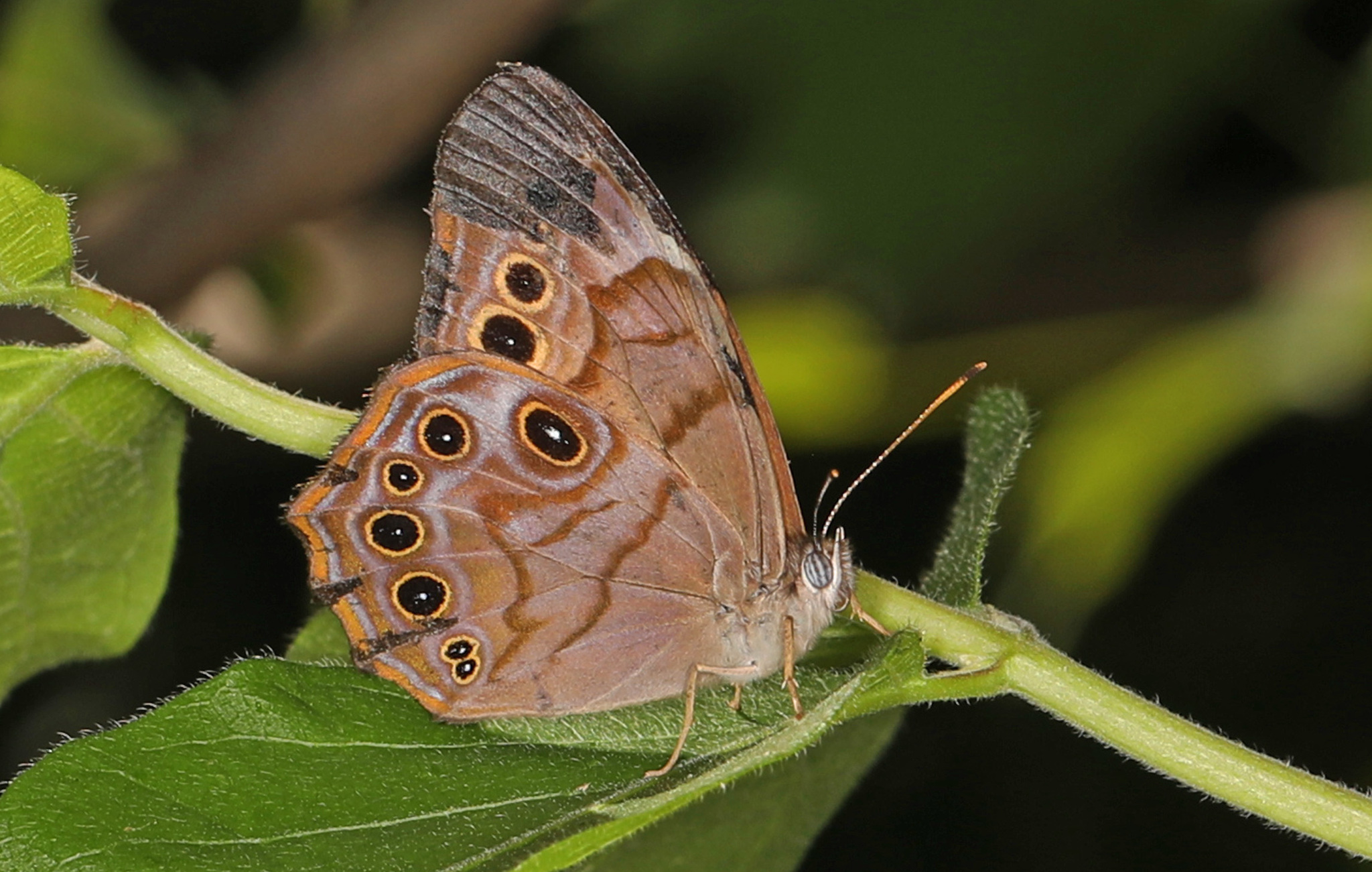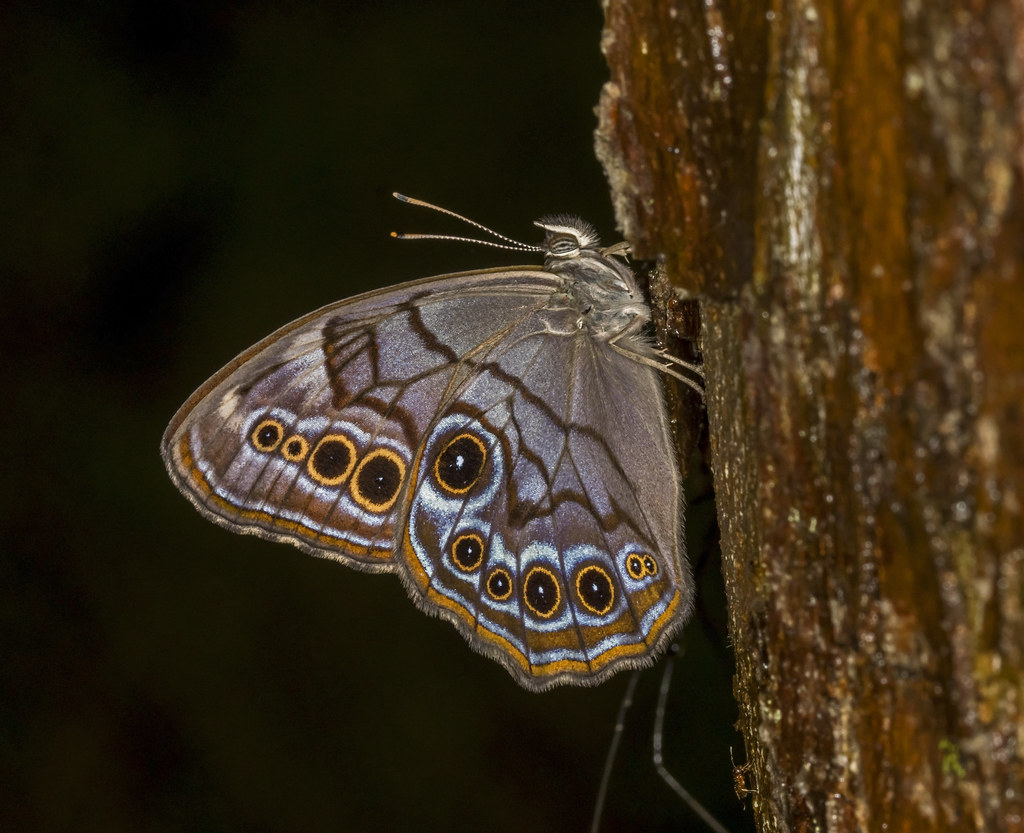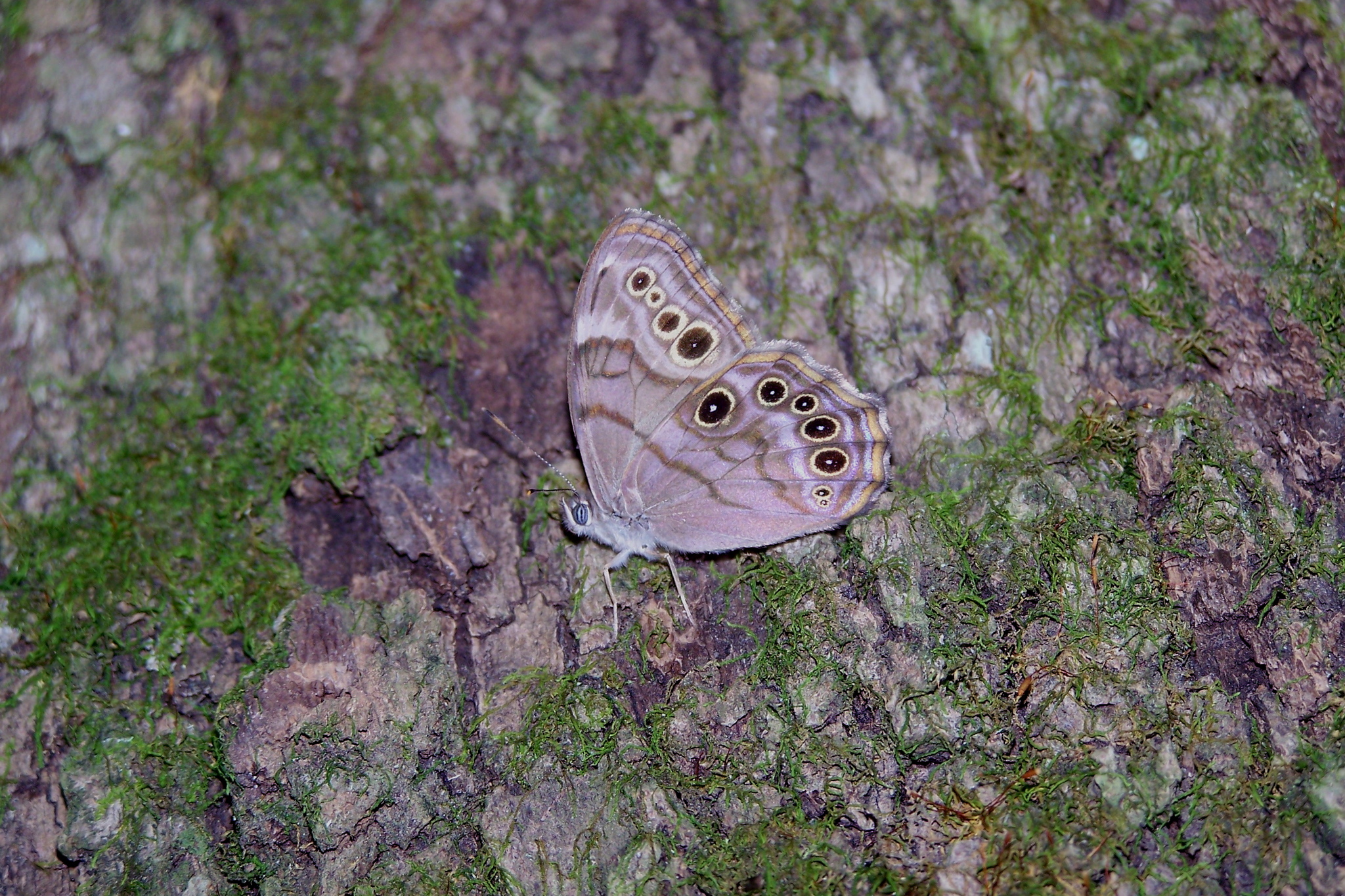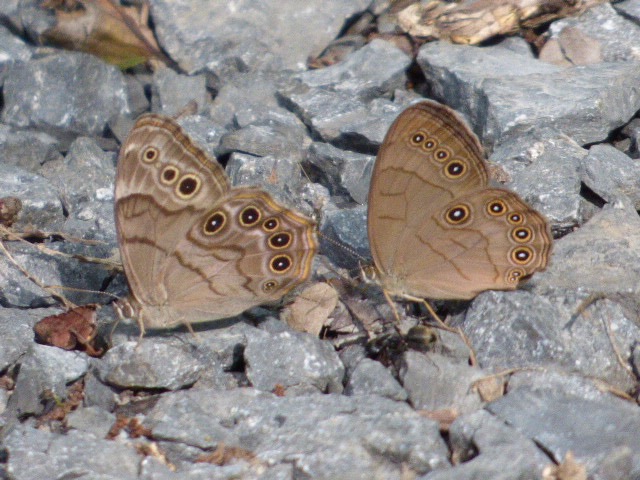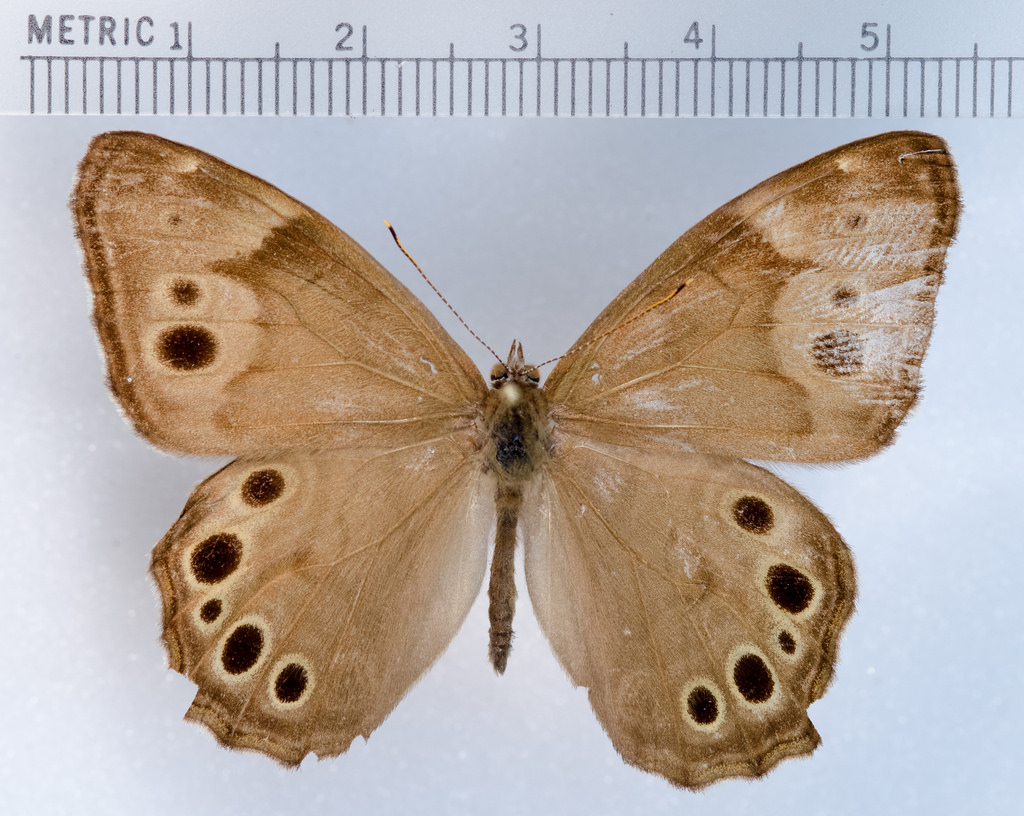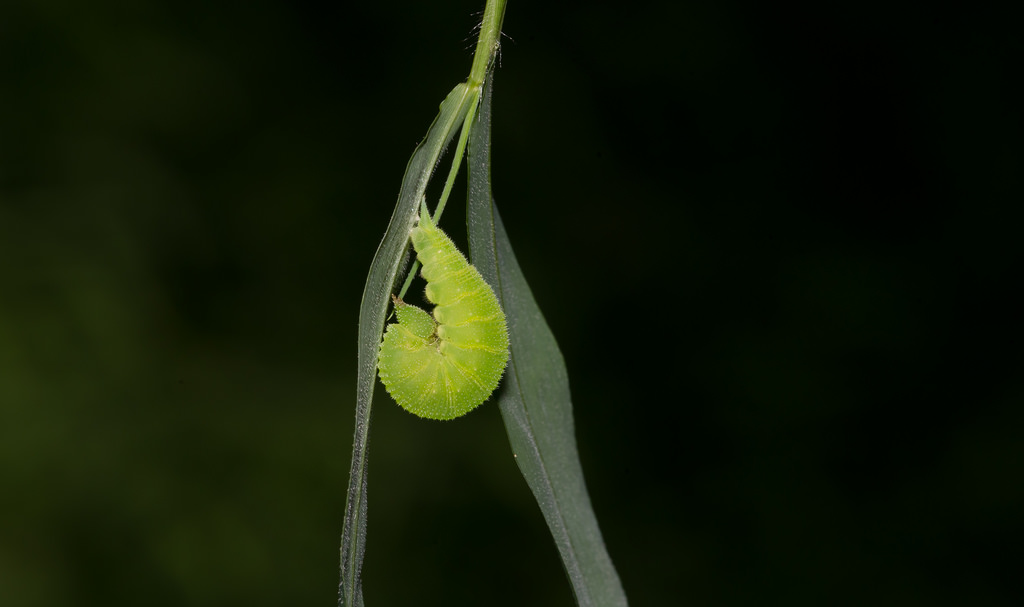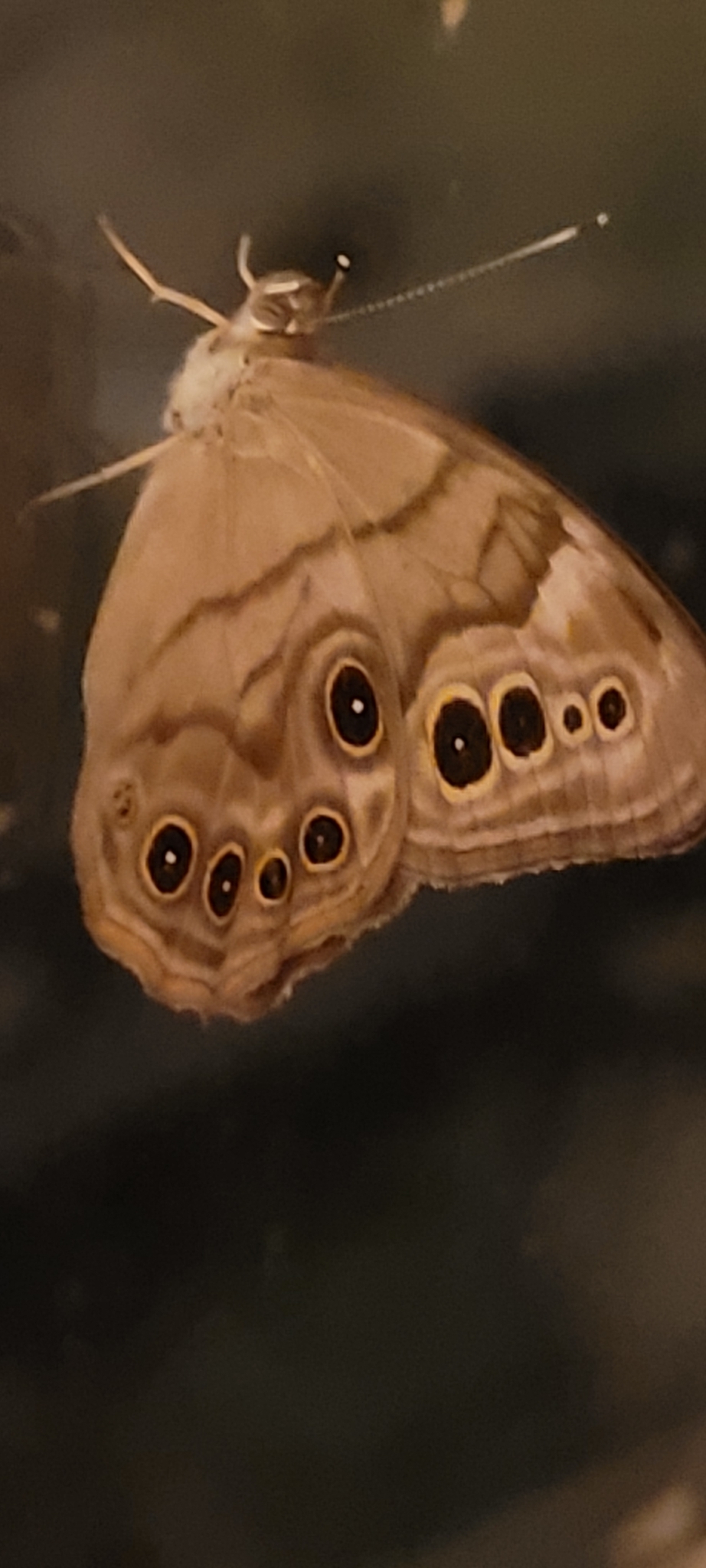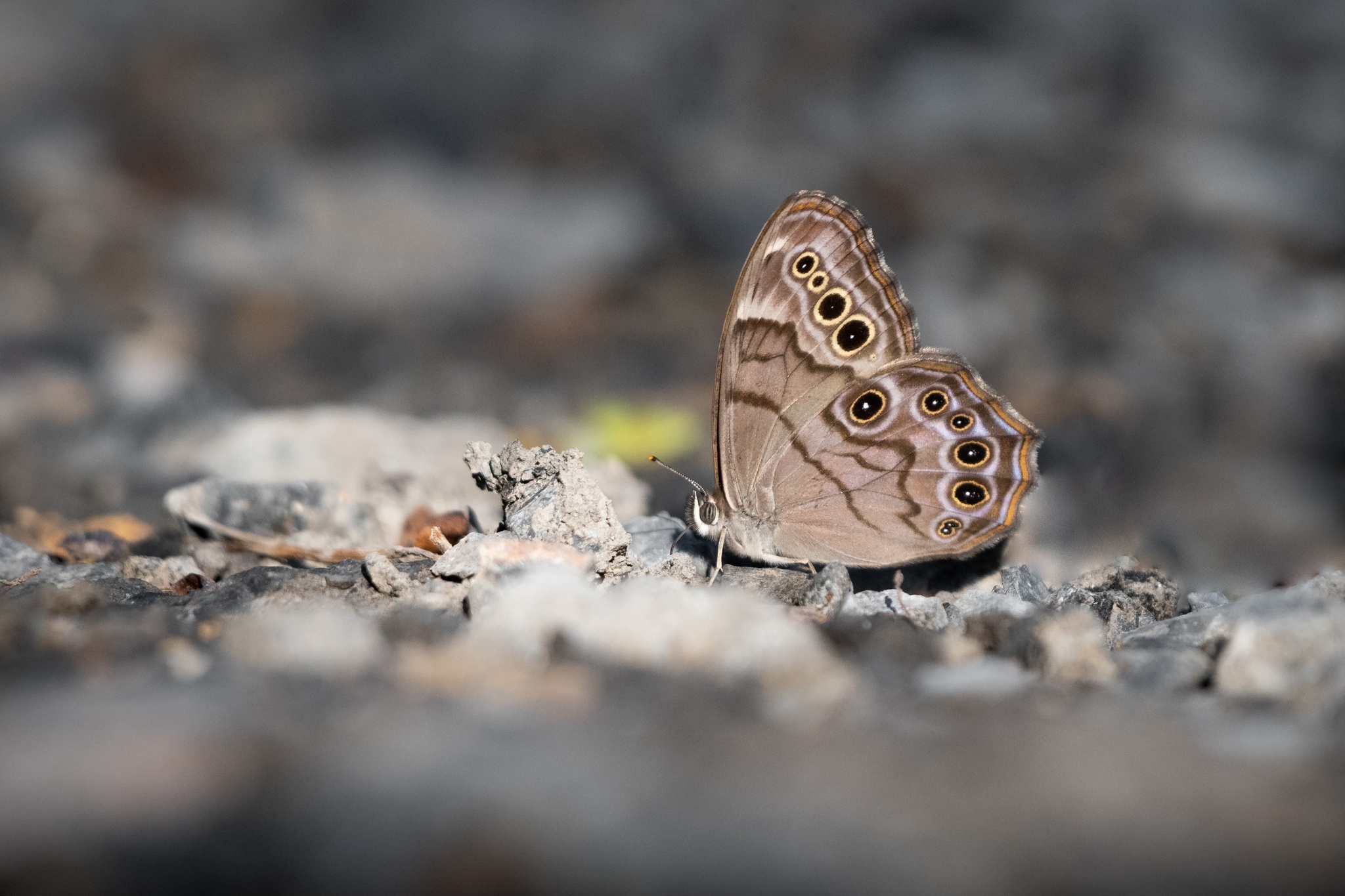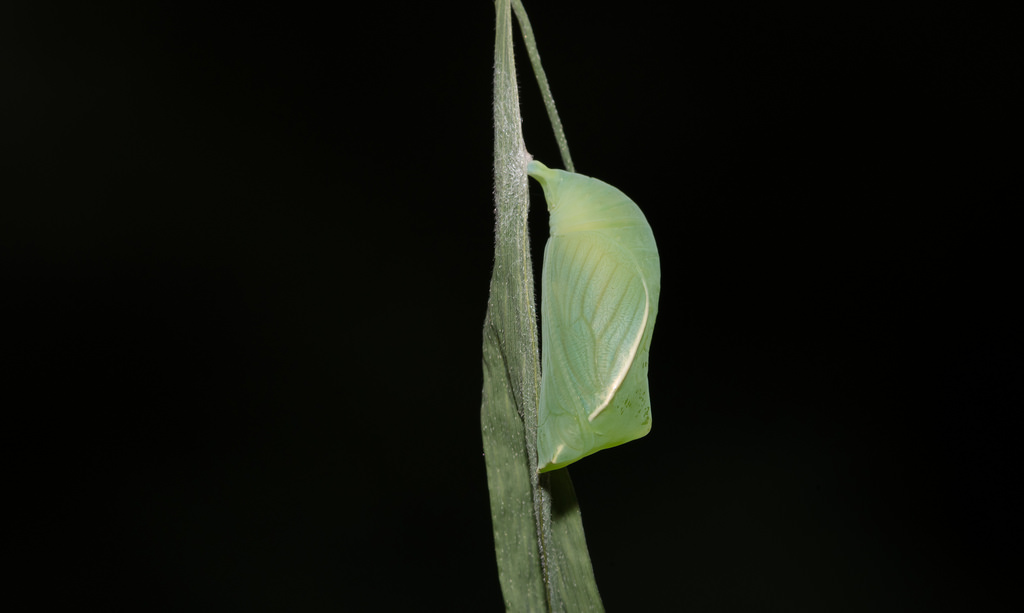Map Snapshot

















521 Records
Status
Northern Pearly-eye (Enodia anthedon) is a large brown butterfly, with prominent eyespots, and jagged brown lines on the undersides of the wings. Like other members of the subfamily Satyrinae, this species prefers shaded woodland habitats to sunny meadows, and it is seldom seen far from forest. If you see a large, drab brown butterfly flying quickly through shaded woods, odds are pretty good it may be a pearly-eye. Watch for them to land on shaded tree trunks, where they often sit with their wings closed over their backs. This butterfly, like many other woodland species, generally shuns flowers, and instead, prefers carrion, sap runs, and mud (Brock & Kaufman, 2003; Allen, 1997).
Relationships
Has recently adapted to using Japanese Stiltgrass as a larval host. Also uses a number of other grass species. In West Virginia, will use White Grass (Leersia virginica) and various panic grasses (genus Panicum)(Allen, 1997).
Seasonality Snapshot
Source: Wikipedia
| Lethe anthedon | |
|---|---|

| |
| Scientific classification | |
| Domain: | Eukaryota |
| Kingdom: | Animalia |
| Phylum: | Arthropoda |
| Class: | Insecta |
| Order: | Lepidoptera |
| Family: | Nymphalidae |
| Genus: | Lethe |
| Species: | L. anthedon
|
| Binomial name | |
| Lethe anthedon (A. Clark, 1936)[2]
| |
| Synonyms | |
| |
Lethe anthedon, the northern pearly-eye, is a species of butterfly of the subfamily Satyrinae in the family Nymphalidae.[3][4][5][6] It is found in North America,[4][7] from central Saskatchewan and eastern Nebraska east to Nova Scotia, south to central Alabama and Mississippi.[8]
The MONA or Hodges number for Lethe anthedon is 4568.1.[6][9]
Description
[edit]The wingspan is 1 1/2 to 2 1/2 inches (43–67 mm.)[8][10] The upperside is brown with dark eyespots and the underside is brown. Adults feed on dung, fungi, carrion and sap from willows, poplars, and birches.
The larvae feed on various grasses, including Leersia virginica, Erianthus species, Muhlenbergia species, bearded shortgrass (Brachyelytrum erectum), Chasmanthium latifolium, bottlebrush grass (Hystrix patula), and false melic grass (Schizachne purpurascens).[10] The host plants of a northern population include sedges (Carex species).[11]
The species overwinters in the larval stage.
Gallery
[edit]-
Northern Pearly-eye in Occoquan Bay National Wildlife Refuge, Woodbridge, Virginia
-
Dorsal view
-
Ventral view
-
Larva
Subspecies
[edit]- Lethe anthedon anthedon (A. Clark, 1936)
- Lethe anthedon borealis (A. Clark, 1936)
Similar species
[edit]- Satyrodes appalachia / Lethe appalachia (R. L. Chermock, 1947) – Appalachian brown
- Satyrodes eurydice [Lethe eurydice] (Linnaeus, 1763) – eyed brown
References
[edit]- ^ "NatureServe Explorer 2.0 Lethe anthedon Northern Pearly-Eye". explorer.natureserve.org. Retrieved 1 October 2020.
- ^ "BMNA Species Detail Northern Pearly Eye". Archived from the original on 2009-07-17. Retrieved 2009-05-19.
- ^ "Lethe anthedon Species Information". BugGuide.net. Retrieved 2018-02-12.
- ^ a b "Lethe anthedon Report". Integrated Taxonomic Information System. Retrieved 2018-02-12.
- ^ "Lethe anthedon Overview". Encyclopedia of Life. Retrieved 2018-02-12.
- ^ a b "North American Moth Photographers Group, Lethe anthedon". Retrieved 2018-02-12.
- ^ "Species Enodia anthedon - Northern Pearly-Eye - BugGuide.net". Retrieved 2008-11-20.
- ^ a b Enodia anthedon, Butterflies and Moths of North America
- ^ Pelham, J.P. (1 July 2017). "A Catalog of the Butterflies of the United States and Canada". Retrieved 2018-02-12.
- ^ a b Northern Pearly-eye, Butterflies of Canada
- ^ Larval host plants of Enodia anthedon ... , The Taxonomic Report, Vol 7 No 6, 2014.
Further reading
[edit]- Arnett, Ross H. (2000). American Insects: A Handbook of the Insects of America North of Mexico. CRC Press.

